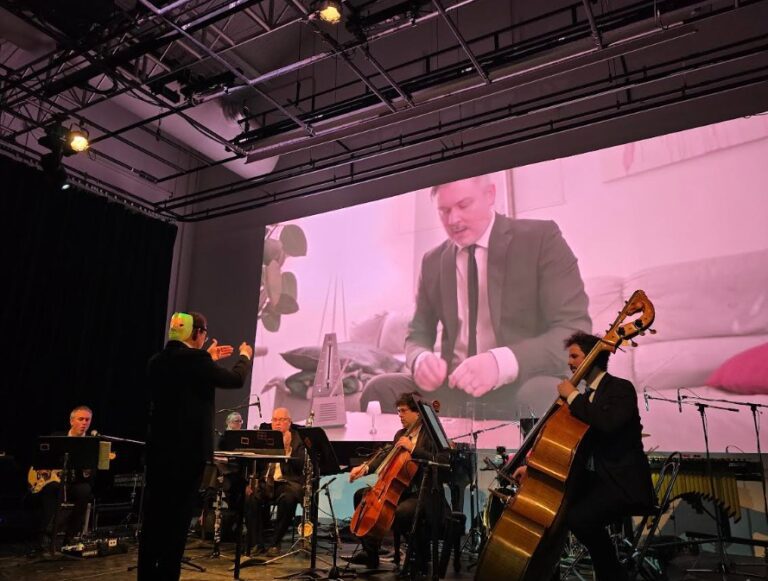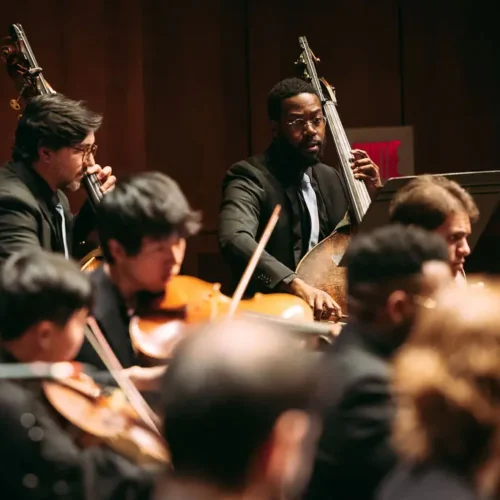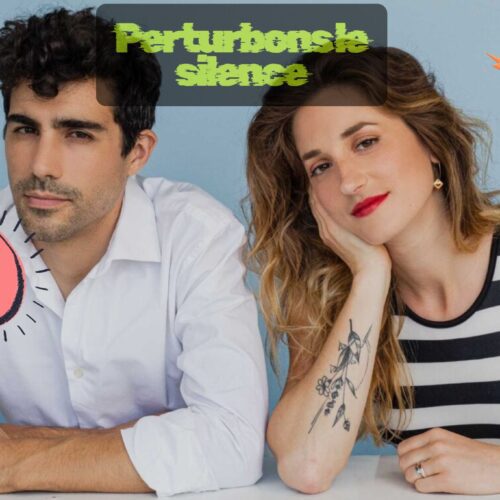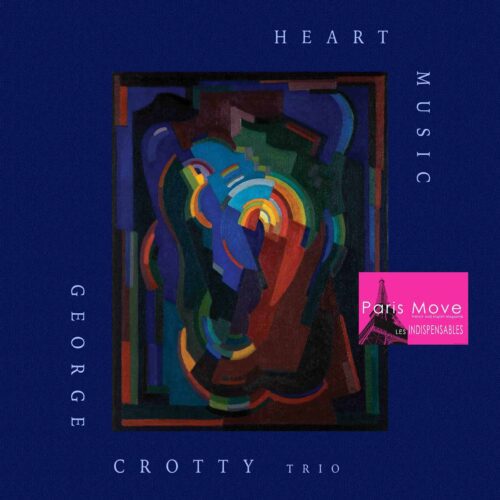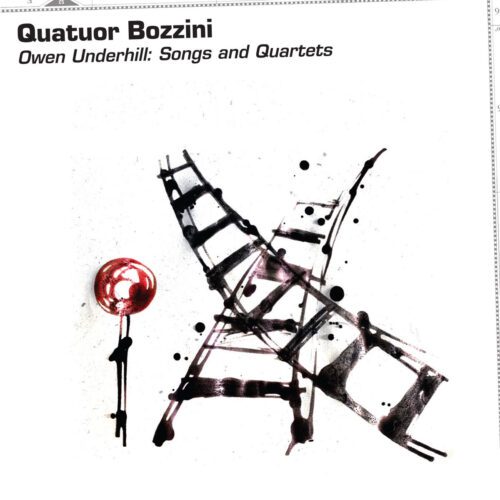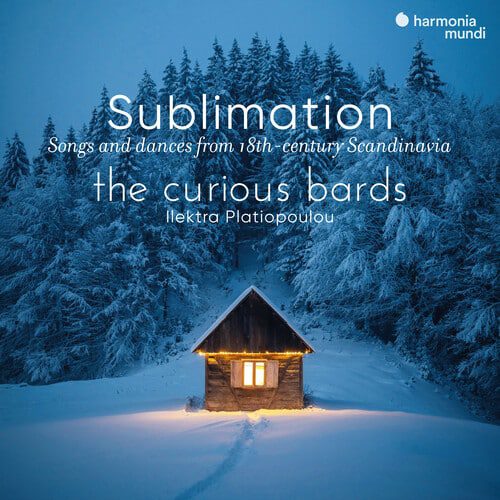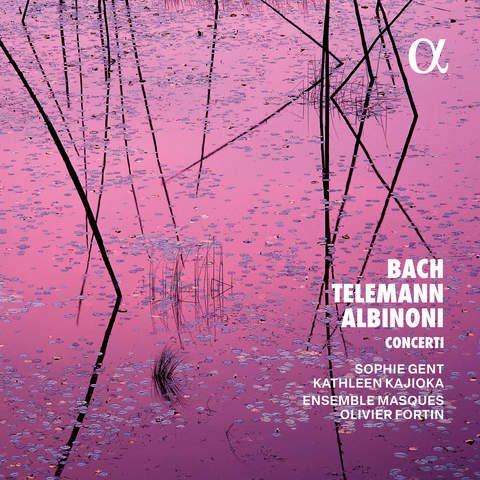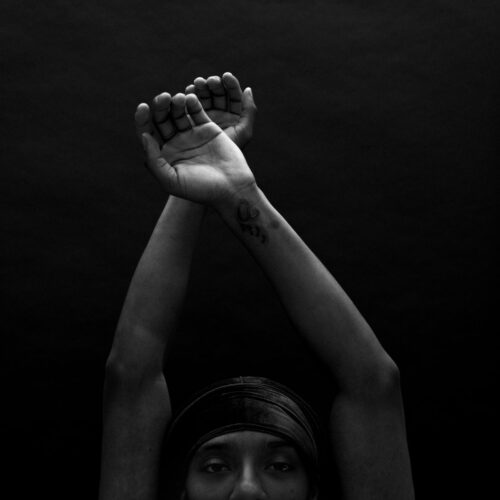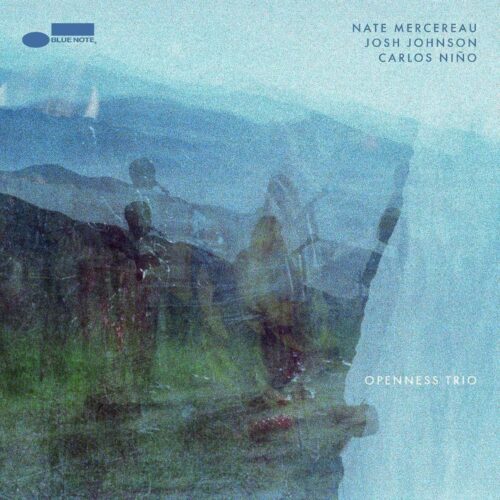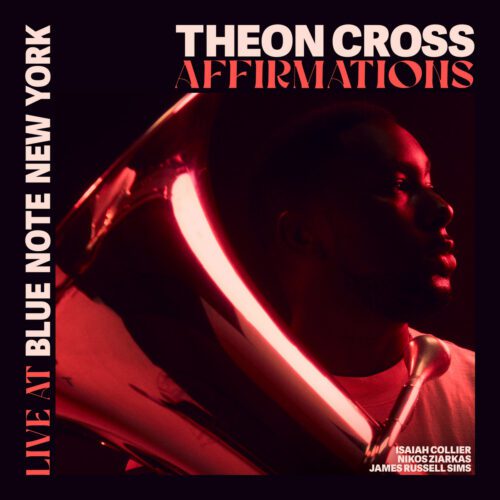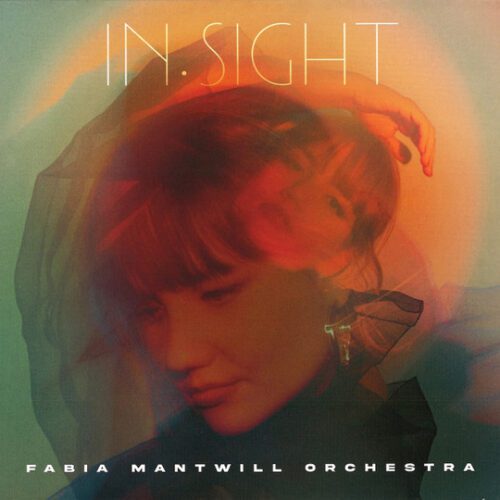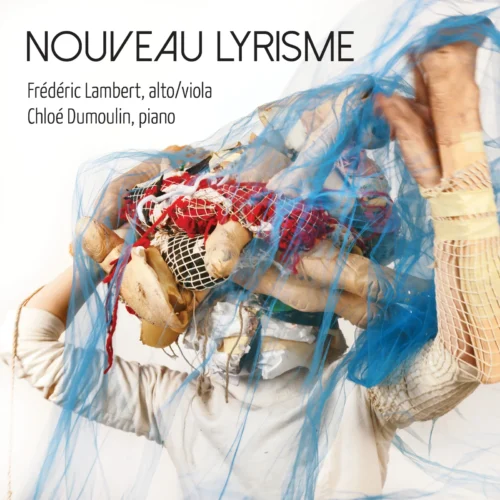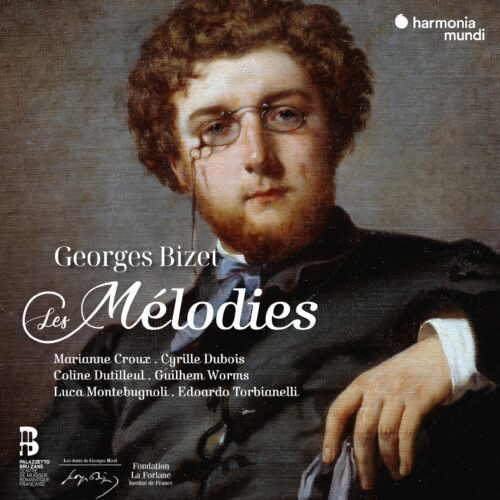Gravelbourg-born Montrealer Nicole Lizée is a true visionary in the field of using cinematographic or videographic material in the composition of musical works. On Saturday evening at UQAM’s Cœur des sciences (Agora Hydro-Québec), this was the program dedicated to her: Montréal/Nouvelles Musiques presented three of her works in a program of five.
The audiovisual materials Nicole Lizée employs in her works include various items taken from everyday life at different times in her life, toys, audiovisual archives, and other everyday artifacts. The composer also films her own scenes involving actor-musicians, such as the teacher who mistakenly explains to us what is an acceptable rhythm and what is an unplayable one.
It also makes use of absurdist humour and fantasy when it makes fake scores appear in the hands of a musician who recounts her setbacks with a possibly malevolent entity. Yet this narrative framework has no other purpose than to be one of the channels of expression for a piece of music, in this case, the re-orchestration of 8-Bit Noir, composed in 2019. In this case, flutist Marie-Hélène Breault is the sole instrumentalist on stage, around whom the composer has erected an audiovisual environment made up of video sketches. The DIY nature of the work is also a feature of this aesthetic, as can be seen in the other pieces on the program.
By Margareta Jeric, Les échos de l’Adriatique was premiered on Saturday by the Ensemble de la SMCQ under the direction of Cristian Gort. For flute, clarinet, percussion, electric guitar, piano, cello, double bass, support, and video device, this piece is accompanied by images of the Adriatic Sea—particularly a dilapidated, abandoned sardine factory on the Croatian coast, whose fate is unknown. The sounds imagined by Margareta Jeric illustrate the cracks in the scenery and nature’s reassertion of its rights. The musical work is full of percussive details, bells, high-pitched bow strokes, and more.
“Black Midi,” composed in 2017 by Nicole Lizée, is an evocation of this sub-trend also called Black MIDI, which consists of compositions using MIDI files to create a piece or remix containing a mind-boggling number of notes, arbitrarily placed on the score or in the composition program, to such an extent that the sheet of music ends up blackened with notes, hence the expression. Execution requires mind-boggling results, impossible for human fingers to interpret such scores. Around this idea of impossible-to-play music, the composer has imagined a narrative: the characters from the previous video are back, recounting their adventures with a sense of humour, stunned by the phenomenon.
For piano and audiovisual treatments performed in phase, this work includes frequent changes of tempo, accelerandos, metric modulation, and the use of musical toys. The aim is to extract this computerized compositional process and link it to the live performance, the piano played by Pamela Reimer wearing a wig in this context of strangeness and fantasy. Very interesting, entertaining, and humorous, but… you might want to give up before the 22nd and final minute of this work, which nevertheless makes its way into Nicole Lizée’s already considerable body of work.
Closures by Philippe Macnab-Séguin is a work in which the mass of sound expands, spreads, contracts, coils, or explodes in the manner of our life trajectories. The piece opens with a whirring sound, followed by slow glissandos leading to bursts of high frequencies. These successive waves are generated by an Ensemble de la SMCQ, this time comprising flute, clarinet, percussion (prominent vibraphone), electric guitar, piano, cello, double bass, stand, and video device. The movement of the tides gradually becomes a continuous rhythm, lightening again with ascending melodic spirals of clarinet and flute, then building up again and slowly fading out until a final percussive blow, topped by the same roar served up in the introduction. Frankly, this Philippe Macnab-Séguin must be taken seriously.
We conclude with “Dancist,” Nicole Lizée’s third work on the program, composed in 2019. In the same spirit as her other works on the program. “Dancist,” for clarinet, percussion, electric guitar, piano, cello, double bass and audio/video device, is dedicated to the surreal evocation of dance music, taking up a similar narrative framework, tinged with a kind of magical realism, as well as with caustic humour and self-reflexivity about her own creative process. The results lie somewhere between audiovisual installation and composition. As we leave the amphitheatre, we are reminded that Nicole Lizée has often performed her works with her own ensemble, which is less visible given her burgeoning career as a composer. The challenge ahead for her, we thought as we left the concert hall, is to create works that will have the same impact as those produced by her own orchestra.
